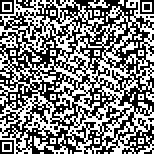| 本文已被:浏览 740次 下载 379次 |

码上扫一扫! |
|
|
| 969例代谢综合征患者心脑血管病发病风险及中医证候研究 |
|
吴俊良1, 石婷婷2, 师雨晴1, 曾雪元1, 熊华忠2, 程智方3, 任吉祥2
|
|
1.长春中医药大学中医学院, 长春 130117;2.长春中医药大学附属医院治未病中心, 长春 130021;3.长春市红旗第一社区卫生服务中心中医科, 长春 130021
|
|
| 摘要: |
| [目的] 分析969例代谢综合征患者10年心脑血管病发病风险及中医证候,归纳疾病风险升高过程中证候变化特点。[方法] 收集2021年9月—2022年1月在长春中医药大学附属医院健康体检患者的体检资料及中医四诊信息量表。采用China-PAR模型评估患者10年心脑血管病发病风险,运用隐结构归纳3种卒中风险程度内中医证候。[结果] 969例40~60岁代谢综合征患者10年脑卒中低、中、高危风险的人数及比例分别为411例(42.41%)、274例(28.28%)和284例(29.31%)。共纳入中医症状42个,分层建立隐结构模型得到8、14和9个隐类。结合专家咨询得出3种风险程度各自证候,低风险患者主要表现为脾肾气虚夹湿证和肾阴虚证;中风险患者以心脾两虚夹痰和肝火炽盛证为特点;高风险患者多为脾肾两虚证和肝阳上亢证。[结论] 代谢综合征患者10年心脑血管病多处于中、高风险程度。虚证是代谢综合征患者转变为心脑血管病风险的基础,阴亏阳亢是达到高风险期的重要表现。 |
| 关键词: 代谢综合征 隐结构模型 心脑血管病风险 |
| DOI:10.11656/j.issn.1672-1519.2023.07.01 |
| 分类号:R589 |
| 基金项目:吉林省中医药科技项目(2022142);吉林省重大科技专项-中医药健康服务业关键技术与推广模式示范研究(20210304001YY);全国名老中医药专家传承工作室项目(吉中医药发〔2022〕48号)。 |
|
| Study on the risk and traditional Chinese medicine syndromes of cardiovascular and cerebrovascular diseases in 969 patients with metabolic syndrome |
|
WU Junliang1, SHI Tingting2, SHI Yuqing1, ZENG Xueyuan1, XIONG Huazhong2, CHENG Zhifang3, REN Jixiang2
|
|
1.School of Traditional Chinese Medicine, Changchun University of Chinese Medicine, Changchun 130117, China;2.Center for the Treatment of Disease, Affiliated Hospital of Changchun University of Chinese Medicine, Changchun 130021, China;3.Department of Traditional Chinese Medicine, Changchun Hongqi First Community Health Service Center, Changchun 130021, China
|
| Abstract: |
| [Objective] To analyze the 10-year risk of cardiovascular and cerebrovascular disease and traditional Chinese medicine(TCM) symptoms in 969 patients with metabolic syndrome,and to summarize the characteristics of changes in symptoms during the process of elevated disease risk. [Methods] The physical examination data and the TCM Four Diagnostic Information Scale were collected from September 2021 to January 2022 from patients with health checkups at the Affiliated Hospital of Changchun University of Chinese Medicine. The China-PAR model was used to assess the 10-year risk of cardiovascular and cerebrovascular disease in patients,and the hidden structure was used to summarize the TCM symptoms within three stroke risk levels. [Results] The number and proportion of 969 patients aged 40~60 years with metabolic syndrome at low,intermediate,and high risk of 10-year stroke were 411(42.41%),274(28.28%) and 284(29.31%) cases,respectively. A total of 42 TCM symptoms were included,and 8,14 and 9 hidden categories were obtained by stratifying the hidden structure model. Combined with the expert consultation,the respective symptoms of the three risk levels were obtained,and the low-risk patients mainly presented with spleen-kidney qi deficiency with dampness evidence and kidney-yin deficiency evidence;the medium-risk patients were characterized by heart-spleen deficiency with phlegm and liver-fire incandescence evidence,and the high-risk patients mostly presented with spleen-kidney deficiency evidence and liver-yang hyperactivity evidence. [Conclusion] Patients with metabolic syndrome are mostly at medium and high risk degree of cardiovascular disease at 10 years. Deficiency evidence is the basis for the transformation of patients with metabolic syndrome into cardiovascular and cerebrovascular disease risk,yin deficiency and yang hyperactivity are important manifestations for reaching the high-risk stage. |
| Key words: metabolic syndrome cryptic structural model cardiovascular and cerebrovascular disease risk |
